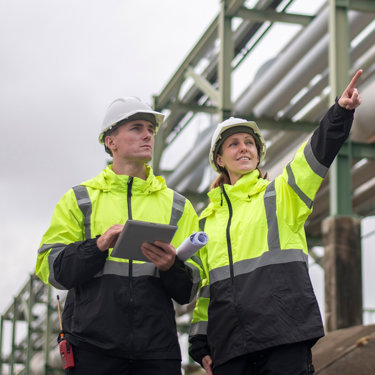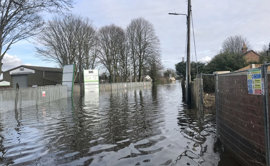Using data for greater understanding of the water network
Published: 29 May 2023
The UK’s water system is riddled with contradictions: Victorian infrastructure is mapped and monitored using machine learning.
Government predicts updating Britain’s combined sewer system would cost between £150bn and £650bn. Water companies are looking instead to technology to enhance the UK’s aging infrastructure, prevent pollution events, and create sustainable drainage solutions.
Data informs everything from asset management to Net-Zero strategy, quantifying progress in reducing CSO discharges, while demonstrating compliance with increasingly strict environmental laws.
This article explores the evolving role of information in the UK water industry – understanding how to use data effectively and avoid tracking irrelevant information to ensure success through AMP8 and beyond.
Defining the future
The objective is a balanced combination of quantitative and qualitative data that provides both practical and ‘big picture’ insights, allowing you to:
- Understand your network
- Improve environmental water quality
- Optimise your infrastructure
- Drive your sustainability, ESG, and Net-Zero aims
- Build a robust asset investment strategy
Sorting essential from excessive data
Water companies process network information in real time through thousands of strategically placed monitors, allowing instant visibility of water quality, flow rates, and pressure levels.
Machine learning algorithms evaluate large data sets and identify patterns and anomalies, helping providers focus maintenance efforts and prevent pollution incidents.
But not all data points are still relevant. Your data should help you understand your assets and drive practical improvements.
Essential asset data would include asset performance monitoring, predictive maintenance, leakage reduction, and environmental management.
Tailored data for each unique estate
Every estate is unique and requires a bespoke approach to asset management and maintenance. You need to map the available data against your network’s individual behaviour and conditions.
To develop an actionable view of your assets, your data should deliver intelligence across four areas:
- Descriptive: what’s happening?
- Diagnostic: why is it happening?
- Predictive: what’s likely to happen?
- Prescriptive: what’s the appropriate action?
Right data, right time
What level of granularity is relevant for your network? When modelling a wastewater catchment that’s subject to flash hydraulic response a high level of granularity is appropriate. However, in less responsive catchments the level of detail can be decreased.
It is also worth questioning the value of real-time data. Spotting a subtle change before a problem occurs is the measure of successful forecasting and asset management. However, uploading data in near real time tests the limitations of the existing telecommunications infrastructure.
The compromise is to upload data daily while receiving intelligently triaged alarms outside the daily upload.
Data modelling
To address loss of service, flooding, and pollution risks, you need a mix of smart network monitoring, real-time and predictive data analysis, and ‘boots-on-the-ground’ expertise.
Data modelling boosts the quality, efficiency, and integrity of your information, and includes network modelling, water quality modelling and asset management.
Improving budgeting, incident prevention and resource planning
Capturing facts from pollutions, failures, and outages is key, so ensure every incident is followed by a comprehensive review of causes, circumstances, and lessons learned. Combining this information with day-today data outputs helps you focus efforts, energy, and budget on preventing future environmental harm and tackling your most pressing network priorities.
Data-led planned preventive maintenance
Data-driven PPM extends the life of aging assets and is your strongest defence against pollution, system failures, and regulatory non-compliance.
A tailored PPM programme will be based on your estate’s unique requirements and challenges and would include infrastructure mapping, environmental asset assessments, CCTV surveys, sonar tracing services, system monitoring and alarms, and smart sewers.
Real-world decisions driving lasting real-life results
The water sector is overflowing with information. But to meet the rigours of AMP8, and evolving environment legislation, providers need to cut the noise and concentrate on quality and context.
Measurable value comes from both data-driven solutions and hands-on experience to combine quantitative and qualitative data with an understanding of how results affect your business, contribute to external pressures, and provide opportunities for positive change.
Your approach should include valuable automated data, plus practical insights from asset management consultancy, design and implementation, and data monitoring through to planned preventive maintenance, emergency response, and post-incident analysis.
More from our Knowledge Hub
Environmental compliance today, creating a sustainable tomorrow
Helping you reduce risk to the environment and your operation by managing assets compliantly while achieving commercial, ESG, and net-zero goals.
Contact our experts




